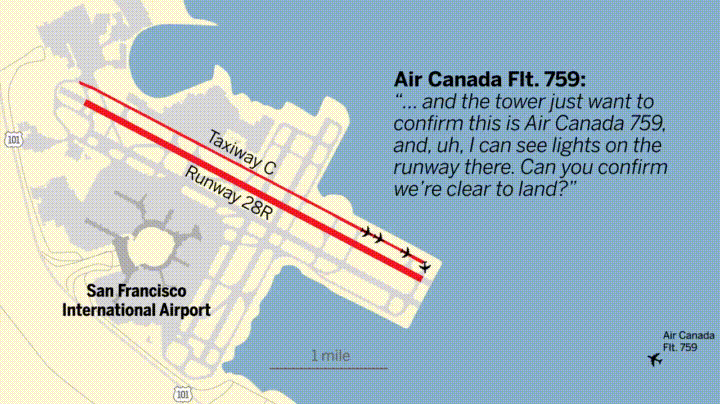Investigators looking into the frighteningly close call involving an airliner that nearly hit planes on the ground at San Francisco International Airport will try to determine why the pilots made such a rookie mistake and nearly landed on a busy taxiway instead of the runway.
The Air Canada plane with 140 people aboard came within 100 feet of crashing onto the first two of four passenger-filled planes readying for takeoff.
Runways are edged with rows of white lights, and another system of lights on the side of the runway helps guide pilots on their descent. By contrast, taxiways have blue lights on the edges and green lights down the center.
"The lighting is different for good reason," said Steven Wallace, a former director of accident investigations at the Federal Aviation Administration. "Some of these visual mistakes are hard to believe, but a crew gets fixated with thinking 'That's the runway,' and it's not."
Then there is the radio transmission in which one of the Air Canada pilots sounded puzzled about seeing what appeared to be the lights of other planes on the runway. Safety experts said that should have prompted the crew to abort their approach long before they did.
Pilots said so-called glide slope technology in modern airliners also should have helped the crew find the runway unless they failed to set it up as they approached the airport.
"This was a clear crew error with many facets, I suspect," said Alan Price, a former chief pilot for Delta.
When investigators interview the pilots, they will focus on understanding how mistakes occurred "and why they did not realize the sequence of errors," said John Cox, a safety consultant and former airline pilot. Investigators will look at the pilots' use of automated-flying systems, their manual flying skills, and how they interacted with each other as uncertainty set in, he said.







